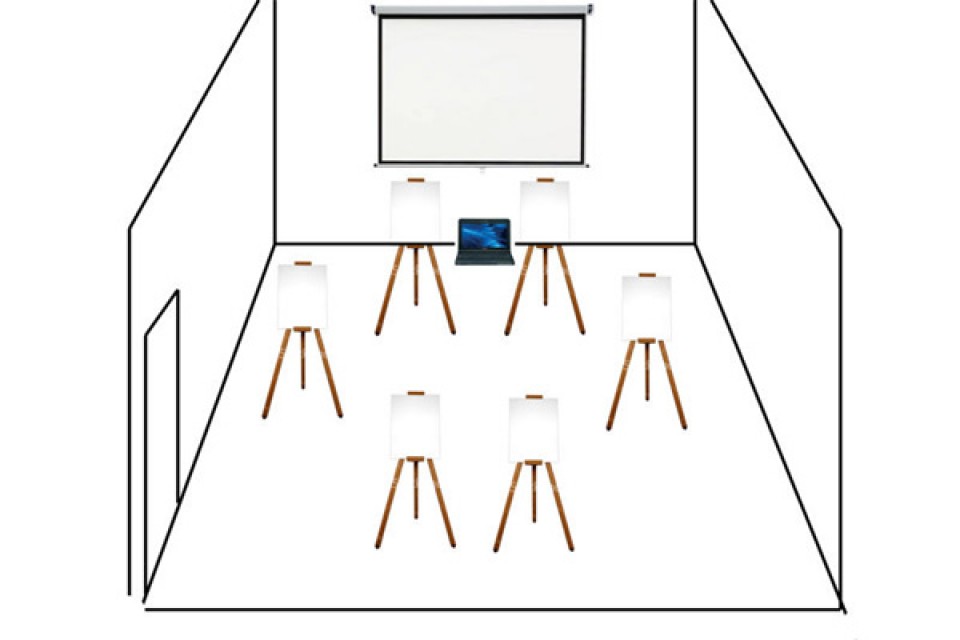
Topological Space
VISUAL SOUND- tests [1]
Katrina Sheena Smyth + Alan Gleeson
Ends 11 March 2011
This one week project by composers, musicians and visual artists, is an open studio and experiment, a series of tests of recorded and composed sound juxtaposed or set beside visual material.
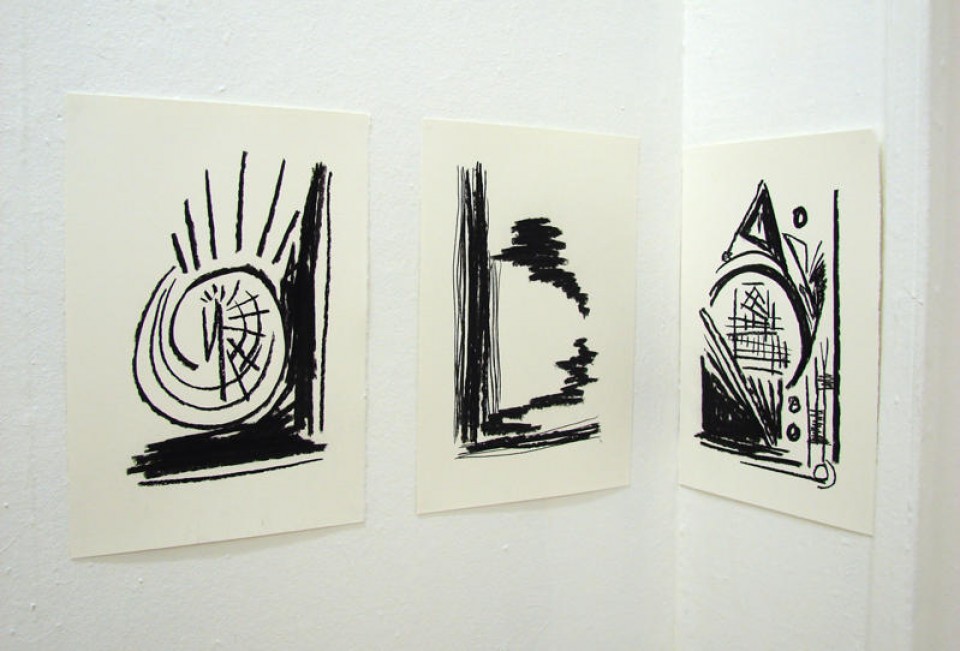
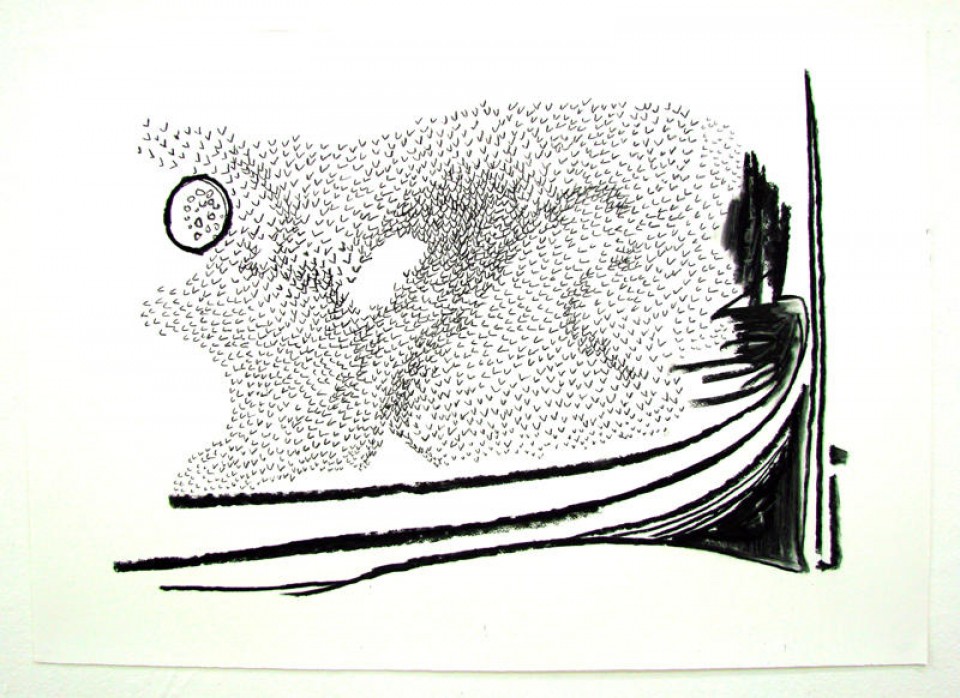
Artist Katrina Sheena Smyth will collaborate via skype sessions with the Berlin based composer and sound designer Alan Gleeson in their project trial 'Topological Space'.
Visual and sound material are closely linked and related on many levels, from the scientific to the aesthetic. The source material for the sound environment to be created is of field recordings of Belfast city and the surrounding areas.
For sometime now Gleeson has been interested in acoustic ecology and the continuously evolving sonic environment we inhabit and how it affects us, both physically and psychologically. Through analysis of the field recording, Gleeson was hoping to discover Belfast’s unique sonic footprint. What he found was that compared with other city-scapes he had recorded Belfast was no different. This was also interesting as it reveals how the sound world we live is becoming homogenised and this in itself is an important lesson. In working with the sound material Gleeson wanted to emphasize the physicality the sounds around us have and also to unearth the hidden sonic atoms contained within the everyday din of city life. The experience of this sound world is not forcing any issue but hopes to encourage a reappraisal of the acoustic landscape and asks the audience to listen again to their everyday world and reflect.
Katrina Sheena Smyth will be creating drawings using pen, pastels and paint on paper influenced by the live streaming of Alan Gleeson's sound material.
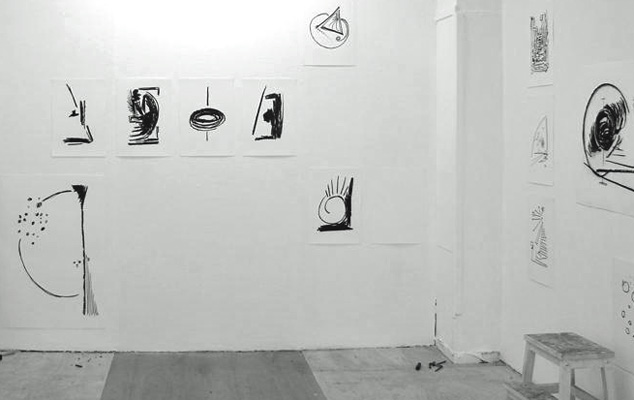
Installation view
Notes from Alan Gleeson
'This sound environment is based on the differences between hearing and listening. One happens at a subconscious level and the other requires a higher level of engagement. Which method you use depends on lots of factors, sometimes the din of city traffic is just that, other times it’s a beast filling our heads making it impossible to think, then other times it’s a rhythmic score that we can almost tap our foot to.
This sound world plays with these ideas. In working with the source material, derived from field recordings of the Belfast streets I have attempted to explore their inner details. For the most part their original signature has been removed, although there are still traces left. This allows a reinterpretation of the cityscape without any of the associations attached with these sounds. It also helps to unlock the hidden detail within these sounds, to reveal a world within a world.
The work also attempts to reflect on the mainstream acceptance of the level of noise generated in city environments. Is this the desired sonic backdrop to our daily lives? As is a common belief most people are accepting of most types of noise with the view that overtime you can acclimatise to the sound. Research shows that on a subconscious level this is not the case, and exposure to certain types of sounds can cause stress, anxiety, and tension whose source is often not recognised. There can be no doubting our knowledge of how therapeutic music can be, not to mention the peaceful sound of nature and the natural elements which become muted in these environments. City planners include parks and green spaces as an escape from the concrete jungle of a city, why not a sonic green space?
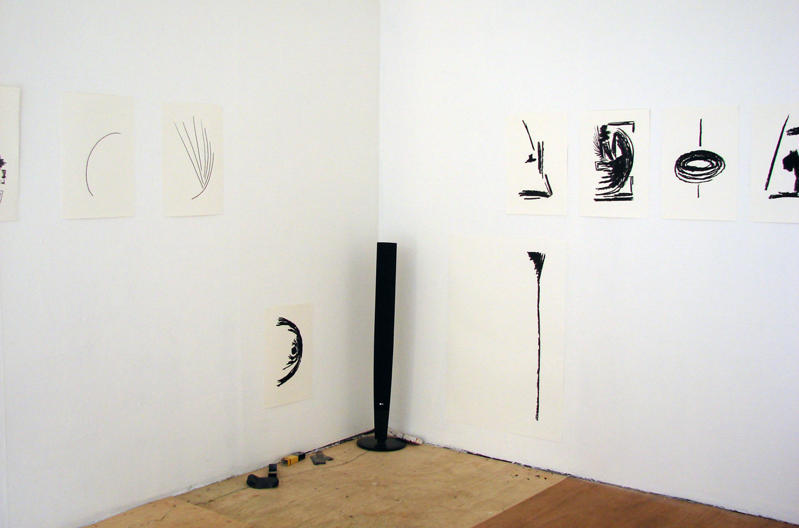
Installation view
VISUAL SOUND- tests [2]
In 'seven voices'
Joel Cathcart, musician and visual artist works collaboratively with
songwriter Isobel Anderson, both currently PhD students at SARC, Queen's
University, Belfast.
'seven voice' consists of a set of (recorded) vocal songs, embedded in
field recordings, accompanied by seven large paintings on sheets of
cardboard. The piece is a kind of 'non-opera'; the song texts
(co-written during several Northern Ireland field trips) are haiku-like
creations describing seven archetypal characters: the monarch, the
lover, the child, the magician, the fugitive, the addict and the hermit,
hinting at possible connections without insisting on a particular
narrative.

